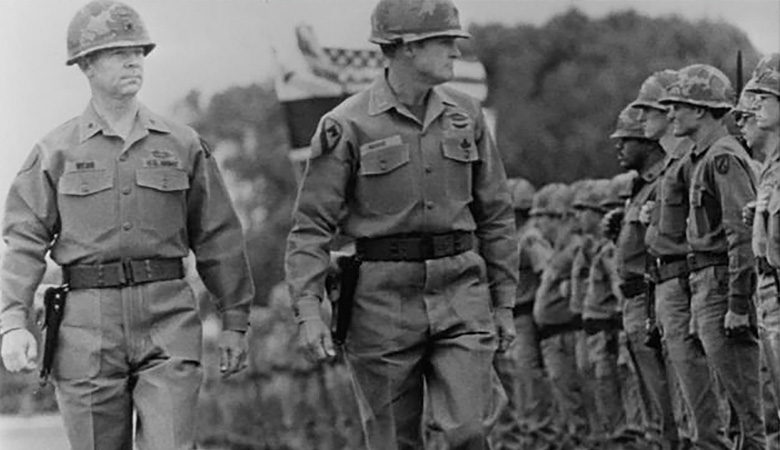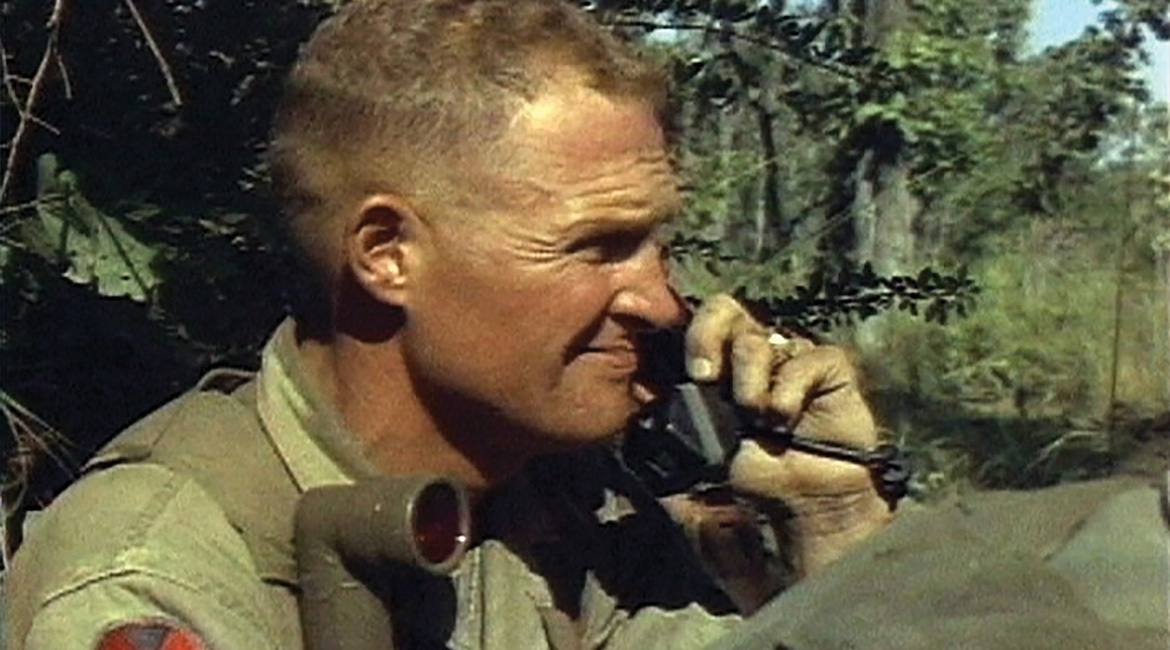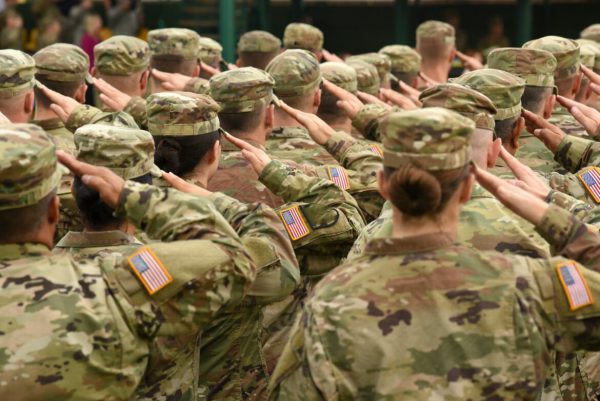
How tactical skill and commitment guided the 1st Battalion at Ia Drang.
Above: LTC Hal Moore and the Battle of the Ia Drang Valley (14-16 November 1965).
In all my research on World War I, World War II, the Korean War, Vietnam, Iraq, and Afghanistan, one American hero who stands out to me is Lieutenant Colonel Harold G. “Hal” Moore. Moore led the 1st Battalion, 7th Cavalry Regiment (Airmobile) in the Battle of Ia Drang Valley during the Vietnam War. His leadership and the battalion’s victory over the North Vietnamese Army (NVA) are among the most heroic in U.S. Army history.
Recording battles can be straightforward, but capturing the essence of a leader is another matter entirely. In the Marine Corps, we learned that leaders must demonstrate to their troops that they are with them in every task, every action, and every moment of combat. A true leader convinces their followers that they will be the first on the battlefield and the last to leave, with every man accounted for, both living and dead.
No one I’ve encountered, in person or through reading, has embodied this commitment as fully as Harold Moore. His story inspired a compelling book, We Were Soldiers Once… and Young, which was later adapted into the movie We Were Soldiers, true to his experience as a battalion commander in Vietnam.
On November 14, 1965, Moore’s unit was airlifted by helicopter into the Ia Drang Valley, marking one of the first major battles between U.S. and North Vietnamese regulars. In the intense conflict, 234 Americans were killed and 250 were wounded, while North Vietnamese casualties were estimated between 600 and 1,200, depending on sources. These numbers, although significant, are particularly striking given the context: an Army or Marine infantry battalion typically has around 1,000 men. With nearly half the battalion wounded or killed (48.4%), emerging victorious was remarkable, underscoring the exceptional nature of Moore’s leadership.
Moore and his men were dropped by helicopter into a landing zone, and he ensured he was on the first chopper to secure it so the rest of the battalion could land safely. Each helicopter could carry only seven or eight fully armed soldiers, so it took around 22 to 24 helicopters to transport the battalion and its headquarters. Once on the ground, Moore immediately began positioning his men to protect the landing zone and prepare for the impending assault from the Viet Cong.
On the evening of November 15, 1965, the battalion faced a fierce attack from three directions, with the NVA aiming to encircle and annihilate the American forces. Moore skillfully coordinated artillery and air support to repel the assault. This success reflected the effectiveness of American combined forces, with dedicated pilots calling in support missions and artillery controllers directing precise fire to prevent friendly casualties.

LTC Hal Moore and the Battle of the Ia Drang Valley (14-16 November 1965).
For his heroism, Moore received the Distinguished Service Cross, which honors his extraordinary heroism:
“During the period 14 through 16 Nov. 1965, Col. Moore, commanding officer, 1st Battalion, 7th Cavalry, 1st Cavalry Division (Airmobile), was participating with his unit in a vital search and destroy operation in the la Drang Valley, Republic of Vietnam.
As the grueling battle continued into the third day, another large Viet Cong strike was repulsed through Col. Moore’s ability to shift men and firepower at a moment’s notice against the savage, final efforts of the insurgents to break through the friendly positions.
Col. Moore’s battalion, inspired by his superb leadership, combat participation, and moral support, finally decimated the well-trained and numerically superior Viet Cong force so decidedly that they withdrew in defeat, leaving over 800 of their dead on the battlefield, resulting in a great victory for the 1st Battalion.
Col. Moore’s extraordinary heroism and gallantry in action were in keeping with the highest tradition of the United States Army and reflect excellent credit upon himself and the military service.”
In one notable instance, despite orders to return to headquarters to meet with the commanding general, Moore replied, “I am not leaving my men until we are done here.” He kept his promise, staying with his battalion until the last moment.
Moore’s leadership principles were similar to those instilled in us by Korean War veterans during our Marine training, emphasizing courage, tactical acumen, and loyalty to those under command.
If you can, pay tribute to these brave soldiers at the Vietnam Veterans Memorial. Slab 3 bears the names of those who gave their lives in the Ia Drang Valley, a powerful reminder of their sacrifice.




